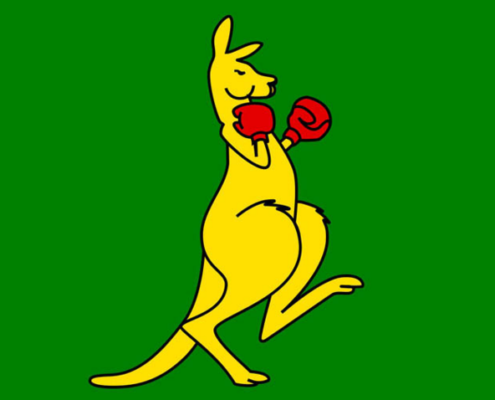THINK: Is Australia’s “Edge” really winning? Part 1
Winning Edge
Its not easy to decide what is best for a country. Be that politics and leadership, sporting success or education. Taking into account the needs of all members of a community is an extremely difficult role.
How long should we allow a strategy to continue before we evaluate whether or not it is working? Are coaches and athletes able to have their voices heard and considered in the effort to create an effective dialogue for the constant improvement of sport?
It is easy to be critical of a system and offer no form of constructive feedback. HP have collaborated with Martin Bingisser who runs a fantastic page over at HMMR Media with training articles from a great cross section of contributors and is also a Tax Attorney at UBS in Zurich, Switzerland. Martin is able to offer an “outsiders perspective” and compare “Winning Edge” in Australia with trends he has seen both in the world of business and of sport. Together Martin and HP ask some questions about the objectives of “Winning Edge” in Australia and will hopefully raise some valid points to stimulate thoughts and discussions on how we can all grow and improve the culture and direction of Sport in Australia. How we can develop a system of our own that takes into account our vastly different environment, budgets, strengths and weaknesses.
So what is effective leadership? How do we measure it? Who is accountable if the leadership strategy is not effective?

Martin Bingisser
The Winning Edge?
Despite a relatively small population, Australia is known around the world as a leader in sport and an innovator in training methods. From the revolutionary methods developed by Percy Cerutty in the 1950s, to the innovative work coming out of the Australian Institute of Sport more recently, Australia and sport go hand in hand. Yet after a small setback in results at the 2012 Olympics, Australia abandoned the plan that had given them so much success and adopted a new “Winning Edge” strategy going forward. A review of the performance structure showed that the previous system was inefficient, as different states were investing in duplicate services. The new idea was to copy the plan that led to the UK’s success at their home London Olympics. After four years of the new system, the program is now in the headlines as it comes under scrutiny
Over on my site HMMR Media I’ve written quite a few articles about structural issues in sports management and sport development. And as an outsider looking at Australia’s situation, it seems that the new Winning Edge might actually be contributing to a long-term failure.

“As an outsider looking at Australia’s situation, it seems that the new Winning Edge might actually be contributing to a long-term failure.”
Accountability
In an article earlier this month I discussed how the setup of sports federations limits the accountability of management. As the Australian Sports Commission head John Wylie just got a contract extension despite doubts on the effectiveness of his plans, it would seem that this situation also applies to Australia. My article also contained some ideas on how to increase performance in a situation where there is little accountability. In looking at Australia’s situation, it seems they are even more applicable down under:
· In the end, the effect of senior management on the bottom line is minimal. Therefore federations should focus funding and energy on the doers. That means funding the coaches, the athletes and the development projects. In theory “Winning Edge” does that; the plan was to increase efficiency and channel funds to athletes. But the reality is that new bureaucrats are needed to deliver this solution and athletes are ending up with less. And as the results have not shown themselves yet, more money is being diverted to outside consultants which can cost tens of thousands of dollars a day (read more about that here)
“the effect of senior management on the bottom line is minimal. Therefore federations should focus funding and energy on the doers.”
Keep Local Culture in Mind
· The “Winning Edge” strategy was to copy the UK’s model, but little regard was given to how different Australia is. It has a one-third of the population spread out over 30 times as much land. The funding in UK was also astronomical, which could absorb the bureaucratic costs. Thinking you could take the same plan, reduce the funding, apply it to a radically different culture and expect the same results was just naive.
In addition, Australia had already found a model that it knew worked. While medals were slightly down in London, it was within the normal range and not necessarily an indication of the end of times. Throwing out a proven system may have been a bit premature and also disregards the lessons learned from what works. For example, a stated reason for the new system was increased efficiency. As many states set up their own sports institutes, costs were duplicated in several areas. But these duplications may also be a necessity. If you want to offer services across a large country, having many institutes can help with that and in fact had proven successful in reaching that goal. Institutes are also long-term investments. They do not move, they do not retire, they do not quit. Investing in an institute creates long-term benefits. Spreading the money directly to individual federations just changes the inefficiencies (each federation now has to hire people to handle the process) and focuses on the short term (what money is left goes to the sure bets).
In my article I also presented some studies showing that, in the business world, “company performance usually suffers when new outsider CEOs rush to make strategic changes in the early post-succession period.” That seems to be the case here. Change is always needed, but the best change is one that keeps in mind what has worked before and the culture the change is being applied to.

How do you think the climate for success in sport in Australia can improve? Could it be that our budgets need to understand that medallist and dramatic improvements need time? Does policy to policy, government to government funding approval contribute to our inability to employ one method and keep on refining it?
Join the discussion and have your say here












